Power Pitch
AI: Methods & Applications
ISMRM & ISMRT Annual Meeting & Exhibition • 10-15 May 2025 • Honolulu, Hawai'i

| 13:15 |
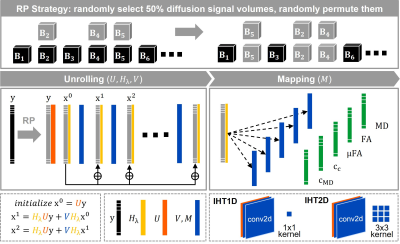 |
Screen Number: 1
1283. Microstructure
Quantification by Q-Space Trajectory Imaging via Unrolled Neural
Networks: Exploring Model Generalizability

J. Yu, O. Gödicke, F. Laun, M. Ladd, T. Kuder
German Cancer Research Center (DKFZ), Heidelberg, Germany
Impact: The developed network accelerates model training
with higher fidelity than state-of-the-art machine learning
methods. The RP approach enhances model robustness and
supports generalizability, facilitating on-the-fly QTI
microstructural estimation across different acquisition
protocols, which may improve clinical utility.
|
| 13:17 |
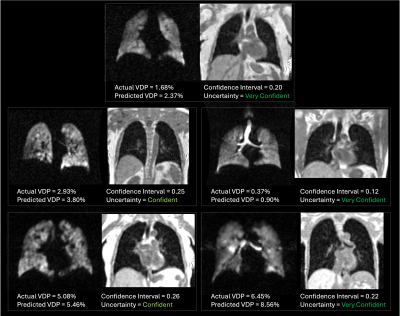 |
Screen Number: 2
1284. Beyond
segmentation: an uncertainty-aware end-to-end approach to
functional lung image quantification

J. Astley, H. Marshall, L. Smith, A. Biancardi, G.
Collier, J. Wild, B. Tahir
University of Sheffield, Sheffield, United Kingdom
Impact:
Direct prediction of 129Xe-MRI lung ventilation metrics using a multi-modality dual-channel convolutional neural network for end-to-end functional lung image quantification. Uncertainty quantification is utilized to improve trust and reliability in predictions and facilitate streamlined triaging in functional lung imaging workflows. |
| 13:19 |
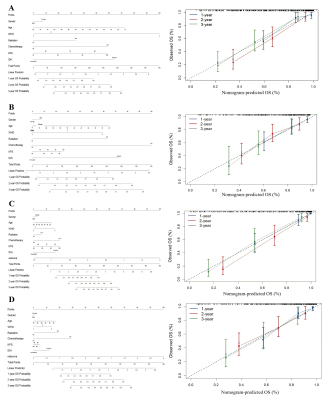 |
Screen Number: 3
1285. Biological
mechanisms underlying prognostic radiomic models based on
dynamic susceptibility contrast perfusion-weighted imaging in
gliomas
J. Yan, C. Zhang
The First Affiliated Hospital of Zhengzhou University, Zhengzhou, China
Impact: Our work presents an accurate and biologically
meaningful tool for survival prediction in gliomas,
facilitating personalized clinical decision-making through a
non-invasive approach.
|
| 13:21 |
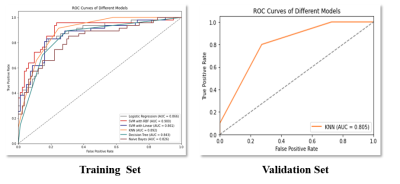 |
Screen Number: 4
1286. Diffusion-Weighted
MRI Radiomics Model for Differentiating High-Grade Gliomas in
Non-Enhancing (Low-Grade Appearance) Gliomas
Y. Liu, Y. Liang, Z. Chen, Y. Wang
Chinese PLA General Hospital, Beijing, China
Impact: The radiomics model based on diffusion MRI can
non-invasively differentiate between high-grade and
low-grade gliomas in non-CE adult diffuse gliomas,providing
valuable support for decision-making in clinical surgical
strategies and prognostic management.
|
| 13:23 |
 |
Screen Number: 5
1287. Explainable
automated image quality assessment for magnetic resonance
imaging through prediction of defect maps
V. Saksena, S. Arroyo-Camejo, R. Schneider
Siemens Healthineers, Erlangen, Germany
Impact: Clinical
adoption of automated image quality assessment methods can
help technologists in automatically monitoring image
quality. Meaningful visual explanations offered by the
proposed approach could help in building trust in the method
and allow fast false positive detection by technologists.
|
| 13:25 |
 |
Screen Number: 6
1288. Image
quality evaluation of multi-sensitivity diffusion-weighted
imaging for rectal cancer with small field of view based on deep
learning
X. Zhang, Q. Xu, L. Guo, Y. Shi, A. Dong, D. Pylypenko
The First Huai 'an Hospital Affiliated to Nanjing Medical University, Huai 'an, China, Huai 'an, China
Impact: This study shows that DLR-based FOCUS-MUSE DWI
enhances image quality, rectal contour, lesion visibility,
SNR, and CNR, suggesting its potential to improve colorectal
cancer staging accuracy.
|
| 13:27 |
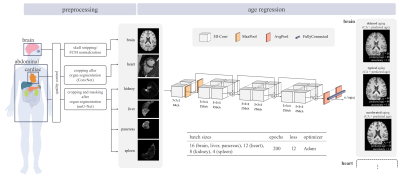 |
Screen Number: 7
1289. Biological
age assessment in 100,000 whole-body MRI of the German National
Cohort (NAKO) and UK Biobank
V. Ecker, B. Yang, S. Gatidis, T. Küstner
University Hospital of Tübingen, Tübingen, Germany
Impact: Our imaging-based multi-organ prediction of
biological age from whole-body MRI of 100,000 participants
in the UK Biobank and NAKO cohorts provides an important
foundation to investigate aging patterns and influencing
factors.
|
| 13:29 |
 |
Screen Number: 8
1290. Exploring
the possibilities with deep learning to compute shape measures
of the brain's white matter connections
Y. Lo, Y. Chen, D. Liu, J. H. Legarreta, L. Zekelman, J.
Rushmore, F. Zhang, Y. Rathi, N. Makris, A. Golby, W. Cai,
L. O'Donnell
Harvard Medical School, Boston, United States
Impact: We investigate the possibility of deep learning
to compute shape measures of the brain's white matter
connections without intermediate steps to convert geometric
tractography streamline data to an image data representation
using a voxel grid with our novel framework, TractShapeNet.
|
| 13:31 |
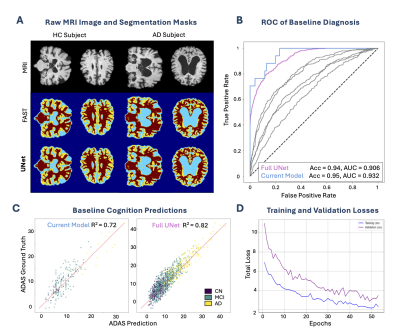 |
Screen Number: 9
1291. Applying
Integrating Event-Based Models and Deep Learning to Predict
Baseline Diagnosis and Tau Progression in Alzheimer's Disease
D. Ma, R. Sandell, A. Raj
UCSF, San Francisco, United States
Impact: Our method enhances understanding of
inter-subject heterogeneity in AD, bridges the information
misalignment in Tau-PET and MRI, and supports precision
treatment by predicting individual tau progression and
seeding patterns with only baseline MRI and demographic
inputs.
|
| 13:33 |
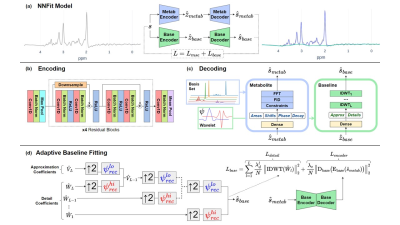 |
Screen Number: 10
1292. A
Self-Supervised Deep Learning Method for Accelerated
Quantification of High-Resolution Short-TE spectroscopic MRI
Datasets
A. Giuffrida, S. Sheriff, B. Weinberg, L. Cooper, B. Soher,
M. Treadway, A. Maudsley, H. Shim
Emory University, Atlanta, United States
Impact: A deep learning method for accelerated
quantification of spectroscopic MRI datasets with short echo
time, NNFit, achieved competitive quantitative performance
in comparison to a standard parametric modelling spectral
analysis method with greater computational efficiency.
|
| 13:35 |
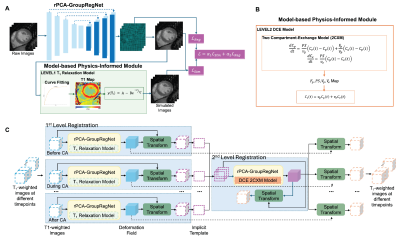 |
Screen Number: 11
1293. A
Generalized Cascaded Self-Supervised Registration Pipeline with
Physics-Informed Learning for Enhanced Quantitative Cardiac MRI
X. Li, Y. Zhang, L-T Huang, H. Chang, T. Niendorf, K-L
Nguyen, M-C Ku, Q. Tao, H-J Yang
Cedars-Sinai Medical Center, Los Angeles, United States
Impact: The cascaded self-supervised pipeline with a
physics-informed module offers a scalable framework to
facilitate accurate and efficient image registration for
image contrast modulation following multiple physical and
physiological models.
|
| 13:37 |
 |
Screen Number: 12
1294. Quantifying
Cerebral Small Vessel Geometry with Self-Supervised Shape-Aware
3D U-Net on 7T TOF MRI: Associations with Age and Cognitive
Function
J. Tang, Z. Deng, E. Joe, H. Chui, Y. Shi, L. Yan
Northwestern University, Chicago, United States
Impact:
Quantitative morphological measures of cerebral small vessels can be effectively segmented using deep learning, which can be used as sensitive markers of aging, cognitive dysfunction, and brain vascular function |
| 13:39 |
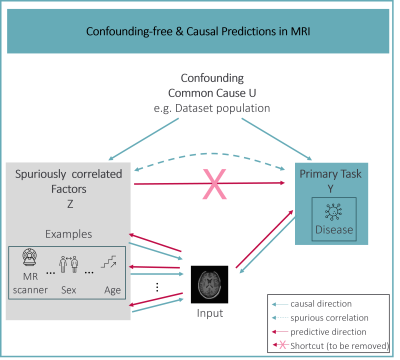 |
Screen Number: 13
1295. Towards
confounding-free and causal predictions: Mitigation of Multiple
Spurious Correlations in Deep Learning-Based MRI analysis
L. Fay, H. Reguigui, B. Yang, S. Gatidis, T. Kuestner
Medical Image and Data Analysis (MIDAS.lab), Department of Diagnostic and Interventional Radiology, University Hospital of Tuebingen, Tuebingen, Germany
Impact: Our novel framework, MIMM-X, an extension of our
previous model (MIMM), is able to remove multiple spurious
correlations in MRI, ensuring causal predictions based on
task-relevant features. This approach improves
generalization for data across various MR scanners and
patient demographics.
|
| 13:41 |
Screen Number: 14
1296. WITHDRAWN |
|
| 13:43 |
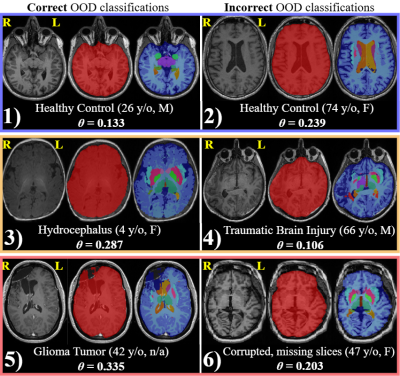 |
Screen Number: 15
1297. Towards
Reliable Deep Learning: Feature-Based Out-Of-Distribution
Detection for Brain Morphometry
T. Di Noto, L. Bacha, K. Prabhu M, V. Dunet, A. Jantarato,
M. Vaneckova, E. Le Bars, N. Menjot de Champfleur, P.
Venkategowda, B. Maréchal
Siemens Healthineers International AG, Lausanne, Switzerland
Impact: We experiment feature-based Out-Of-Distribution
(OOD) detection to identify problematic scans for which
segmentation results might be unreliable. While Near-OOD
remains an area of future improvement, our approach is
effective for the majority of use cases and adds negligible
computation time.
|
| 13:45 |
 |
Screen Number: 16
1298. APGC
Net: Unsupervised Cross-Modality Adaptation for Multi-organ
Segmentation in TAO via adaptive pseudo-label-guided contrastive
learning
Y. Sun, X. Zhou, M. Deng, C. Chen, Q. Dou, K. Chan, K.
Chong, W. Chu
The Chinese University of Hong Kong, Hong Kong, Hong Kong
Impact: The impact lies in the technical innovation to
ensure consistently accurate segmentation of each organ
involved in TAO on multi-modal MRI, which is beneficial to
alleviating the burden of manual labeling and reducing
observer variability.
|
| 13:47 |
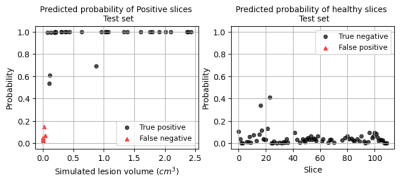 |
Screen Number: 17
1299. An
Imageless Magnetic Resonance Diagnosis procedure for fast and
affordable screening and follow-up
P. García Cristóbal, A. González Cebrián, F. Galve, V. Van
Der Valk, E. Ilıcak, M. Staring, A. Webb, J. Alonso
Instituto de Instrumentación para Imagen Molecular, CSIC, Universitat Politècnica de València, Valencia, Spain
Impact: The use of Imageless MR sequences, combined with
deep-learning methods, could offer a rapid, cost-effective
screening technique suitable for large population-wise
deployment. In simulations we show how white matter lesions
could potentially be detected and characterized.
|
| 13:49 |
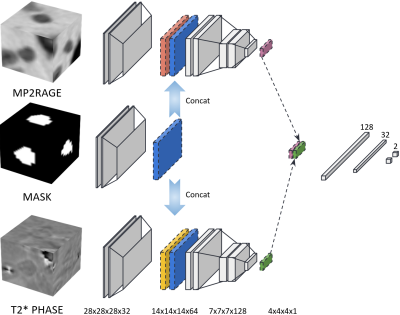 |
Screen Number: 18
1300. Deep-PRL:
a deep learning network for the identification of paramagnetic
rim lesions in multiple sclerosis
F. Spagnolo, A. Bhardwaj, P. Gordaliza, P-J Lu, M.
Ocampo-Pineda, M. Bach Cuadra, X. Chen, B. Ayci, A. Cagol,
V. Andrearczyk, A. Depeursinge, C. Granziera
University Hospital Basel and University of Basel, Basel, Switzerland
Impact: These results represent a significant step
towards the integration of an AI tool to assist clinicians
in the identification of PRLs, thereby improving the
clinical management of pwMS.
|
| 13:51 |
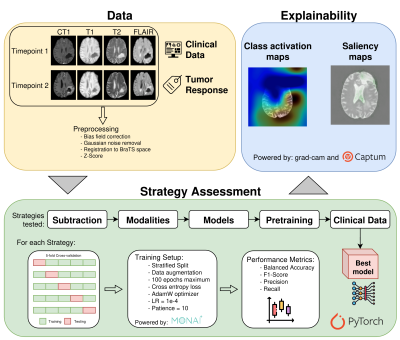 |
Screen Number: 19
1301. Prediction
of treatment response in a longitudinal glioblastoma dataset
using deep learning
A. Matoso, C. Passarinho, M. Loureiro, J. Moreira, P.
Figueiredo, R. Nunes
Instituto Superior Técnico, Universidade de Lisboa, Lisbon, Portugal
Impact: This work sheds light on the deep learning
strategies for predicting treatment response in
glioblastomas, highlighting the approaches that perform
best, thus providing valuable insights into the optimization
of the prognostic accuracy of these models.
|
| 13:53 |
 |
Screen Number: 20
1302. Deep
learning-based fetal brain extraction method for in utero
diffusion MRI
Z. Zhang, J. Li, Y. Chen, Y. Feng, X. Zhang
Southern Medical University, Guangzhou, China
Impact: The proposed method can significantly streamline
the tedious annotation process and improve segmentation
accuracy, contributing to a fast and accurate
post-processing pipeline.
|
| 13:55 |
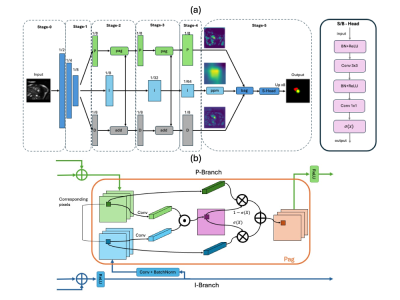 |
Screen Number: 21
1303. Low
latency in-line segmentation of cardiac structures for real-time
cardiac MRI
K. Lee, Y. Tian, K. Nayak
University of Southern California, Los Angeles, United States
Impact: We demonstrate in-line low-latency segmentation
with comparable LV and MYO Dice score to
state-of-the-art-methods using a semantic segmentation
model.
|
| 13:57 |
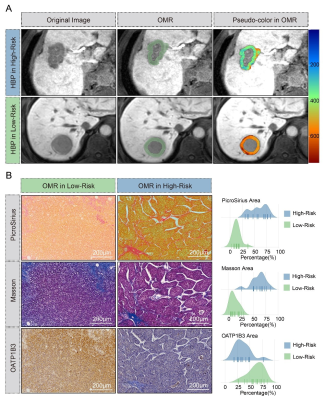 |
Screen Number: 22
1304. Decoding
heterogeneity in solitary HCC: OATP-dependent HBP-MRI radiomics
predicts microvascular invasion & prognosis.
Y. can, Z. Yang
The Affiliated Cancer Hospital of Harbin Medical University, harbin, China
Impact: This study integrates multiple machine learning
methods to predict MVI in HCC, revealing an ECM-OATP1B3
correlation and enhancing the biological interpretability of
the radiomics model for prognostic assessment.
|
| 13:59 |
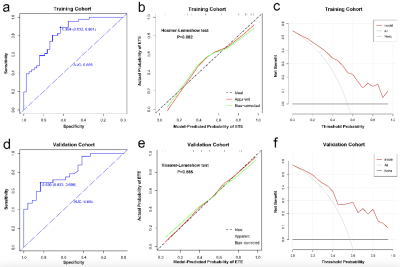 |
Screen Number: 23
1305. Development
and Validation of an MRI-Based Predictive Model for Preoperative
Extrathyroidal Extension in Papillary Thyroid Carcinoma
B. Chen, Y. Song, H. Wang, L. Tang, X. Xie, A. Mao, P-Y Wu,
Q. Chen, B. Song
Department of Radiology, Minhang Hospital, Fudan University, Shanghai, China
Impact: Our nomogram model, incorporating age,
protrude_value, and ADC_Best_rate, effectively predicted
preoperative ETE in PTC patients, thereby aiding surgeons in
optimizing therapeutic decision-making. ADC_Best_rate
demonstrated potential as a robust indicator in MRI
functional imaging.
|
| 14:01 |
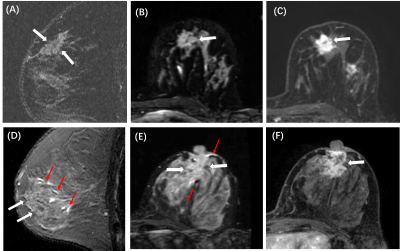 |
Screen Number: 24
1306. Prediction
of High and Low Expression of Tumor-Infiltrating Lymphocytes in
Breast Cancer Using MRI Features Combined with Molecular
Subtypes
J. Zhou, Y. Zhang, Y-L Liu, J-H Chen, M. Wang, M-Y Su
The First Affiliated Hospital of Wenzhou Medical University, Wenzhou, China
Impact: MRI features could predict high vs. low TILs
expression. The three molecular subtypes (HR+/HER2-, HER2+,
triple-negative) had distinctly different TILs, and more
sophisticated models by combining MRI features with clinical
and histological information could improve the TILs
prediction accuracy.
|
| 14:03 |
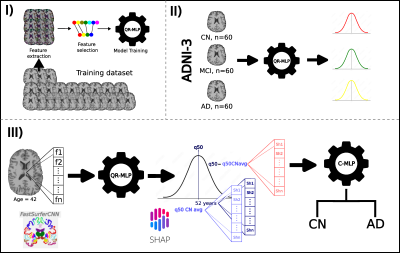 |
Screen Number: 25
1307. Beyond
Brain Age: QS-GAP as a Quantile-Based Tool for Detecting
Neurodegenerative Aging Patterns
R. Navarro-Gonzalez, R. de Luis-Garcia, S. Aja-Fernández
Universidad de Valladolid, Valladolid, Spain
Impact: QS-GAP offers a refined, personalized approach
to assessing brain aging, enhancing classification between
AD and CN individuals. By aligning aging patterns with
cohort norms, it supports more accurate diagnostics and
advances neurodegenerative research, particularly in
individualized brain health assessments.
|
The International Society for Magnetic Resonance in Medicine is accredited by the Accreditation Council for Continuing Medical Education to provide continuing medical education for physicians.